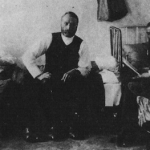In his book The Plot to Kill God, Paul Froese outlines the Soviet Union’s unsuccessful campaign to exterminate religion, drawing out the lessons we can learn from the campaign about the possibility of secularity. In order to completely remove religion from the socio-cultural landscape, Soviet authorities oppressed religious leaders and practitioners, strangled religious institutions, replaced religious rituals with secular versions, and waged rhetorical war on the legitimacy of religious belief in light of “scientific” progress. For all their efforts, Froese recounts, the Soviet state was only ever partially successful: though they were able to effectively eliminate religious supply, they were unable to sufficiently dampen religious demand. Moreover, after the fall of the Soviet government, religion saw a resurgence in nearly all the former Soviet republics. Atheism and secularization seemed unable, despite overwhelming cultural and political advantage, to do away with religious belief.
Froese’s argument fits nicely into the literature on secularization as a natural experiment. The Plot to Kill God supports an argument that shows up as early as Andrew Greeley’s Unsecular Man. The argument, in its various forms, holds that there is something to human life and experience that has a natural affinity with religious belief. For Greeley, that something was the various ultimate questions in life that “science” was (and seemingly would always be) unable to answer. The contemporary form of this argument often traces our natural openness to religiosity to neurological sources of religious belief or cognitive origins for such things as mystical experiences. But more interesting than the evidence Froese offers in favor of the religion-as-innate-human-capacity, is how he uses the Soviet experience to illustrate the curious relationship between “science” and religion.
Though the term itself is thrown around with incredible frequency, it is surprising how seldom we stop to think what “science” even means, particularly as a social and cultural force. To be sure, there is no unified or concrete entity “science” existing in the world. If we want to refer to science as one single thing, the only reasonable referent that we have would be a method of inquiry: observation, testing, and discussion. But there is nothing inherent to science as method that would put it at odds with religion. In fact, as method there is nothing inherent to science at all. But it is here that we tread toward what is usually meant by science when it is invoked as religion’s foil: a socially constructed cultural concept.
Science as social construction is a complex idea, but it has a number of identifiable elements that are worth exploring. The first is the strong empiricist and agnostic assumptions we read into the method. Many people believe empiricism and naturalism just are, as a matter of fact, crucial parts of the scientific method. However, that belief is the simply the continent legacy of European cultural conflict during the Enlightenment that leas to a biased understanding of science as a priori excluding theistic thought from the sort of serious inquiry that science as method makes possible.
The second is that science as social construction is the product of actors and institutions that help shape how science is understood and represented in the public sphere. A good example of how this came to be can be found in the victory of secularizing forces in the academy, which scholars like Mark Noll and George Marsden have expertly chronicled Science, as it is often understood, is the cultural product of institutions and actors that frame what “science” is in a particular way, mobilizing it on behalf of the interests of those actors and institutions (which, interestingly but not surprisingly, is the same critique often leveled toward the treatment of religion by religious actors and institutions).
Lastly, Froese’s account makes rather clear that the repetition of the science/religion dichotomy is more often the delegitimizing tactic of actors on behalf of science as social construction. In the Soviet Union (and in many other communist regimes) “science” was strategically mobilized to discredit, disprove, and destroy religion. Religion also seems to suffer most when its own actors and institutions buy into this dichotomy.
We would do better to keep in mind just which of these different aspects of “science” we are talking about in our public debates and discourse. In so doing, we would be better able to utilize the benefits of science as method (the type of science that produces the technologies we all rely on) without falling prey to the fallacies inherent in science as social construction.
[Image of Scientists from Wikipedia]













